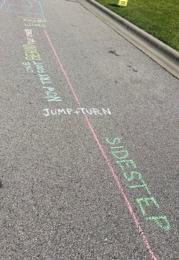Integration of OT in Daily Life
- Logan Garner
- Dec 13, 2023
- 2 min read

When occupational therapy sessions take place in a child's natural environment, it gives them a sense of comfort. Often, toys and supplies from home are used to help with the transition into the therapy program recommendations. Occupational therapy home programs allow families, parents and teachers to get involved with a child’s goals so they can accomplish their skills at home, school and in the community. Below are activities to complete at home.
Create a Letter Bead Necklace
For this activity, have your child find the letters of his or her name on letter beads. Hide their selected letter beads in Play-Doh so they can work on finding them. Once they find all the beads, they can create a necklace! Ultimately, this activity promotes bilateral integration (the ability to coordinate both sides of the body for a purposeful action) and fine motor skills (the use of the small muscles controlling the hand, fingers, and thumb).
Incorporate Regular and Frequent Movement Breaks
This can look different based on the age of the child, but some examples include log rolling, bear crawling, jumping up and down on a trampoline, and swinging. Just like adults, kids' attention can wane when their bodies have to remain still and quiet for long periods of time. Incorporating movement breaks can support children maintaining concentration and attention while regulate their energy levels. Movement is essential for the development of gross and fine motor skills, physical fitness, language and communication, and learning.
Find the Cotton Ball Place cotton balls within a whisk, and have your child pull them out from between the wire loops. This game promotes fine motor skills and visual perception skills (the ability to give meaning to what a person is seeing).
Resources: https://www.luriechildrens.org/en/blog/ten-at-home-occupational-therapy-activities-that-can-mak e-a-difference/#:~:text=At%2Dhome%20OT%20can%20also,%2C%20bathing%2C%20playing %20and%20socializing.




Integrating occupational therapy (OT) into daily life can make a huge difference in how individuals manage challenges and build lasting wellness. But true healing often goes beyond just the practical—this is where innovative approaches like psychedelic therapy come in. Dr. Gorman, a respected psychotherapis therapy for business owners and cofounder of Fluence, is pioneering efforts to blend traditional therapies with cutting-edge psychedelic treatments. Through his work training clinicians and supporting clients, he emphasizes a holistic approach that helps people not only function better day-to-day but also transform their mental health from the inside out.